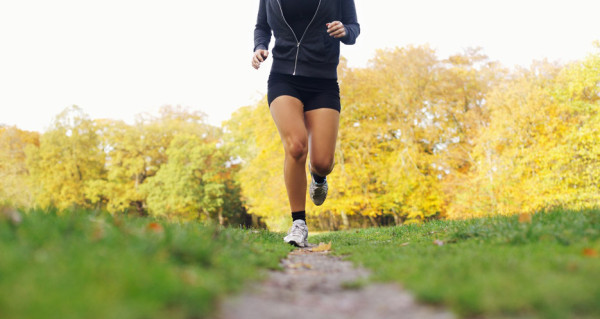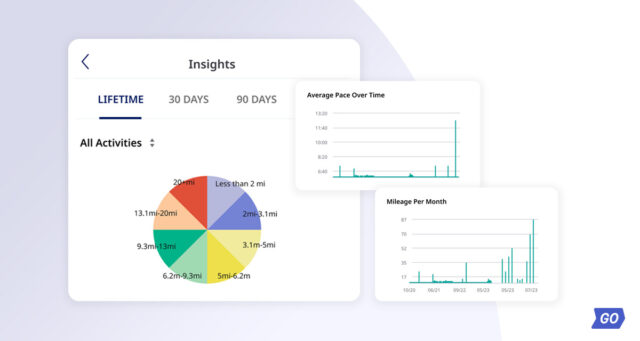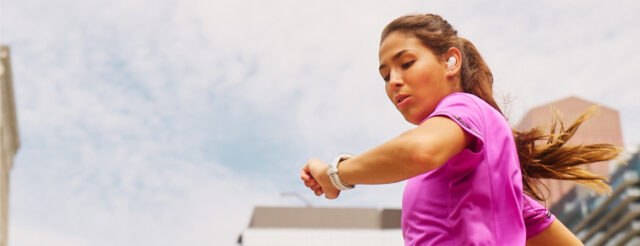You’ve probably heard that building up core strength has many benefits when it comes to running. At a high level, a strong core can improve your posture and speed. Because your arms and legs all stem from the core, the strength in your limbs is tied to the strength in your torso. A strong core is a solid foundation for strength in the rest of the body.
The main benefit of core strength for runners is increased stabilization in the torso. Your core muscles (the chest, back, abs, and obliques) are what keep your torso upright when you run, and reduce “wobbling” when moving your arms and legs. Core strength allows the pelvis, hips, and lower back to work together more smoothly to expend less energy. Core strength also significantly improves balance, meaning that you recover quickly from missteps small and large.
Core strength for distance runners is especially important. Towards the end of long runs or races, when you are extremely fatigued, your form begins to suffer. Poor form slows you down and makes you prone to injury. Core strength helps you maintain good posture, and reduce the pains that result from poor posture over a long distance.
Here are four simple bodyweight moves to improve core strength that every runner should try! You can do a few reps of these moves before or after each run, or condense them into a weekly workout that’s focused on your core.
Planks (targets all core muscles)
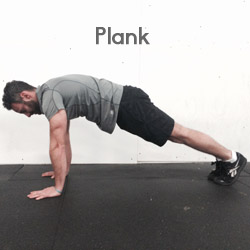
Planks are especially great for runners because they really emphasize the relationship between your core and your limbs. Planks will strengthen your abs, erector spinae (the muscles that run up and down your spine), chest, shoulders, quads, and hamstrings. Once you can achieve the flat back with tucked pelvis posture, try holding 30-second to 1-minute planks.
Hollow Rocks (targets abs, especially lower abs)
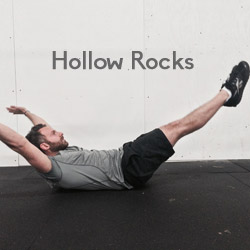
To outsiders, this traditional gymnastics move looks like a fairly easy, sort of funny rocking motion. But when you do it for yourself, you will find that it’s incredibly difficult, and also incredibly effective.
Start by lying with your back on the ground, arms and legs fully extended. Lift your arms and legs off the ground, and attempt to curve your back so that your whole body makes a smooth “bow” shape. This is the basic “hollow body” position. Then, begin rocking back and forth to make it a “hollow rock” exercise!
You initially struggle with rocking because of a “flat” spot at your lower back. It is crucial that you are engaging your lower abs to round out the lumbar arch (the flat spot of your back that makes rocking so difficult). Start by practicing hollow rocks for two minutes at a time, concentrating on pulling the lower abs in to effectively round out the lower back. If this is too challenging to start, you can do a modified version where you hug and hold your knees into your chest and roll back and forth that way.
Superman (targets back, especially erector spinae)
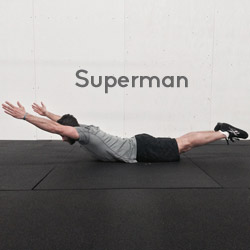
This simple exercise engages the back muscles and emphasizes the strength relationship between your back & your protruding limbs. The
“Superman” exercise could be described as the opposite version of ‘hollow rocks.”
Lie face down on the floor, then fully extend your arms and legs straight out. Engage the muscles in your core and back to lift your arms, legs, and head off the floor, and hold, letting them hover. As your strength increases, you should be able to increase the distance between the floor and your limbs. As you practice Supermans, you should be trying to improve both the amount of time you can hold it, as well as lifting your arms and legs higher, higher, higher off the ground. For a modified version, lift just one arm and the opposite leg at a time before switching and raising the others.
Windshield wipers (targets the obliques)
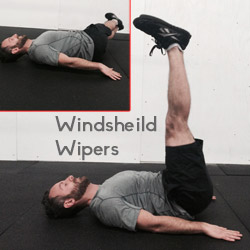
This exercise places emphasis on the obliques, an extremely important muscle group for running stability. Building strength in the obliques will minimize excess wiggling and wobbling of the torso while you run.
Lie on your back and extend your legs upwards, making an “L” shape with your body. Then, keeping your back glued to the floor, lower your legs down to the right, back up to the middle, then down to the left, making a “windshield wiper” motion with your legs.
With these exercises, pretty soon you’ll notice less wobbling, more power, and greater efficiency as you run!


